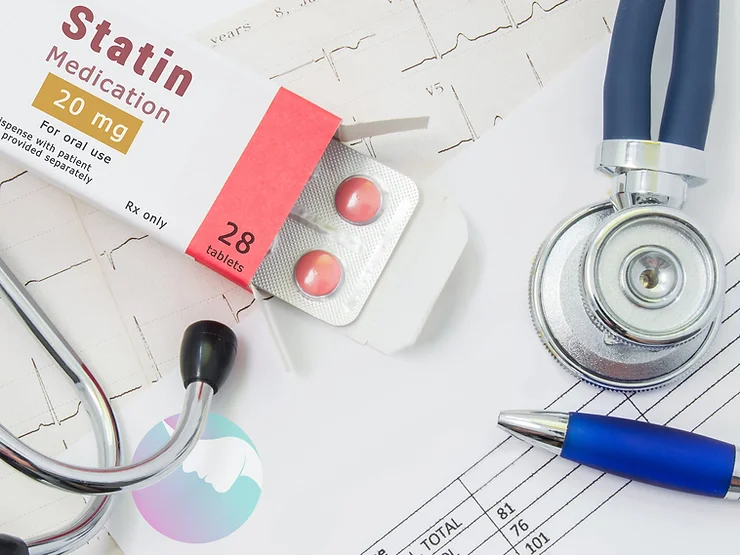
In 2012-2013 there were 221 million statin drug prescriptions[1] written in the U.S., at a cost of $16.9 Billion. If you were among those given a statin prescription, I’ll bet you weren’t told what they can do to harm you. Unfortunately, few doctors take the time to learn this. It’s about time to get this information to your doctor.
Why statins (Lipitor, Crestor, Zocor, etc.) are routinely prescribed by doctors
The cholesterol-lowering drugs atorvastatin (Lipitor), rosuvastatin (Crestor), pravastatin (Pravachol), simvastatin (Zocor), lovastatin (Altoprev), and pitavastatin (Livalo) are known to lower your LDL-Cholesterol levels and have an “anti-inflammatory” effect on coronary artery endothelium (inside lining). This is all that pharmaceutical companies want you to know and remember—and all most doctors remember, so they liberally prescribe them.
Moreover, doctors feel secure in prescribing any medicine that has been shown by randomized placebo-controlled clinical studies to be effective. The statin drug manufacturers know this and successfully established their studies showing the benefits of statins to lower LDL-cholesterol and reduce cardiovascular disease risk.
Beatrice Golomb, MD, PhD, associate professor of medicine at the University of California, San Diego (UCSD) School of Medicine and director of UC San Diego’s Statin Study group[2] has looked deeply into these studies. In fact, she tells us that essentially all the studies in favor of statins were indeed funded by these statin manufacturers.
Dr. Golomb has reportedly cited nearly 900 studies on the adverse effects of statins in various published articles. Clearly, all medications have some side effect to be aware of. Its just that these are the number one selling drug (by dollar volume) in the USA and the many side effects are not hardly mentioned by doctors who prescribe them. You do have other options than to take a statin to lower your risk of heart disease, which is the focus of my next article coming.
In her paper 2008 article published in the American Journal of Cardiovascular Drugs[3] Dr. Golomb gives scientific evidence statins damage mitochondrial function. Mitochondria are our energy-producing cells, which control harmful molecules called oxygen free radicals. For example, statins lower the anti-oxidant Coenzyme Q10 (“Q10”) in your body through the same pathway that they lower blood cholesterol.
Because aging and greater chronic illnesses correlate with fewer and weaker mitochondria, statin use increases the likelihood that chronic illnesses will worsen the longer a patient takes a statin. The manufacturers even admit that studies show that statins’ benefits do not exceed their risk in patients over age 75 years, even in those with known heart disease.
Apparently, depending on genetics and age, statins can protect against problems such as muscle and kidney function or heart arrhythmia in some people but it worsens these conditions in others.
Through their damaging effect on our mitochondria, statins contribute to the following adverse effects:
Cognitive problems, behavioral and emotional disorders, chronic nerve and muscle damage, and even neuromuscular degeneration (much like Amyotrophic Lateral Sclerosis, a.k.a. ALS) are reported from taking statins. Some have reported memory loss or confusion after taking statins.
Peripheral neuropathy (pain or numbness in the extremities): Thousands of statin users have reported peripheral neuropathies, and there is a tendency toward resistance to all traditional medical treatments for this.
Blood glucose elevations or type 2 diabetes. Your blood sugar may increase when you take a statin. This can lead to type 2 diabetes and is more profound if your blood sugar is already elevated. If you have no other choice than to take a statin drug (there are several I will soon point out), the benefit of taking a statin “may potentially outweigh the risk.”
Muscle problems: rarely (1 in 20 users) high-dose statin use causes muscle cells to break down (rhabdomyolysis), and release myoglobin protein into the bloodstream, severe muscle pain, and kidney damage.
Liver damage
Headaches
Nausea
Pancreatic dysfunction
Sexual dysfunction
Tendon problems
Blood pressure elevations
“Physician awareness of such side effects is reportedly low,” Dr. Golomb said. According to Duane Graveline, M.D., author of four books on the subject, “many of the statin side effects are permanent, and weakness and fatigue are common complaints. Many statin victims say that abruptly, almost in the blink of an eye, they have become old people. By the time we become aware of it, it is already far too late and the damage has been done to those susceptible.” [4]
If you were among those given a statin prescription, I’ll bet you weren’t told other safer (and better) alternatives to taking a statin drug. I’ll share this with you in my next article.
To long-term health and feeling good,
Michael Cutler, M.D.
[1] https://jamanetwork.com/journals/jamacardiology/fullarticle/2583425
[2] https://ucsdnews.ucsd.edu/archive/newsrel/health/01-09Golomb.asp
[3] Golomb BA, Evans MA. Statin adverse effects: a review of the literature and evidence for a mitochondrial mechanism. Am J Cardiovasc Drugs. 2008;8(6):373-418. Review. PubMed PMID: 19159124. https://www.ncbi.nlm.nih.gov/pubmed/19159124
[4] Duane Graveline, MD, MPH, The Dark Side of Statins, Spacedoc Media LLC, 2010








